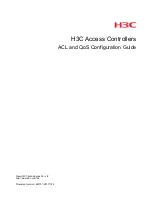
S
SLA/W
A
DATA
A
P or S
Reception of own
address and data
bytes. All are
acknowledged.
UCRXIFG = 1
DATA
DATA
A
A
UCTXNACK = 1
Refer to:
”Slave Transmitter”
Timing Diagram
Bus not stalled even if
UCBxRXBUF not read
P or S
DATA
A
A
Arbitration lost as
master and
addressed as slave
UCALIFG = 1
UCMST = 0
UCTR = 0 (Receiver)
UCSTTIFG = 1
(UCGC = 1 if general call)
Last byte is not
acknowledged.
UCTR = 0 (Receiver)
UCSTTIFG = 1
UCSTPIFG = 0
Gen Call
A
UCTR = 0 (Receiver)
UCSTTIFG = 1
UCGC = 1
Reception of the
general call
address.
UCTXNACK = 0
Bus stalled
(SCL held low)
if UCBxRXBUF not read
Read data from UCBxRXBUF
UCSTPIFG = 0
UCTXIFG = 0
UCSTPIFG = 0
eUSCI_B Operation – I
2
C Mode
965
SLAU356I – March 2015 – Revised June 2019
Copyright © 2015–2019, Texas Instruments Incorporated
Enhanced Universal Serial Communication Interface (eUSCI) – I
2
C Mode
If the master generates a repeated START condition, the eUSCI_B I
2
C state machine returns to its
address-reception state.
shows the I
2
C slave receiver operation.
Figure 26-10. I
2
C Slave Receiver Mode
26.3.4.1.3 I
2
C Slave 10-Bit Addressing Mode
The 10-bit addressing mode is selected when UCA10 = 1 (see
). In 10-bit addressing mode,
the slave is in receive mode after the full address is received. The eUSCI_B module indicates this by
setting the UCSTTIFG flag while the UCTR bit is cleared. To switch the slave into transmitter mode, the
master sends a repeated START condition together with the first byte of the address but with the R/W bit
set. This sets the UCSTTIFG flag if it was previously cleared by software, and the eUSCI_B modules
switches to transmitter mode with UCTR = 1.
















































